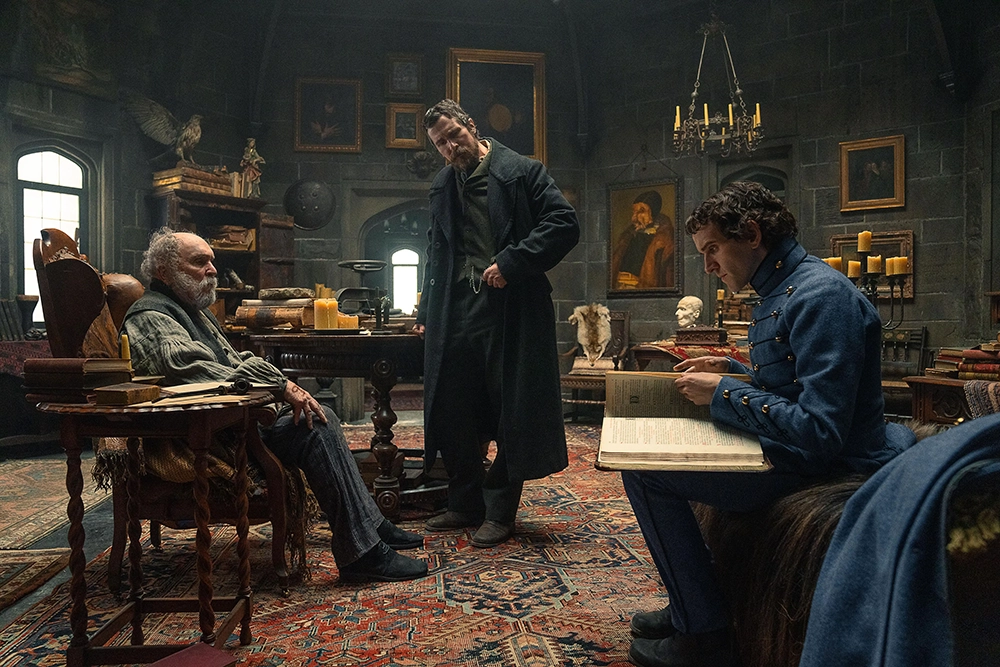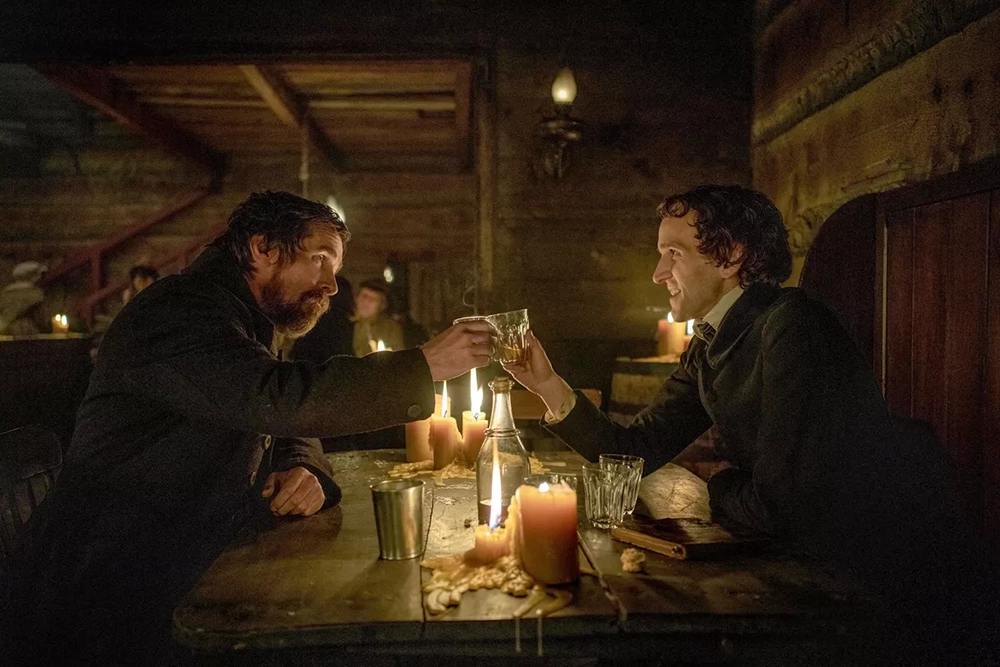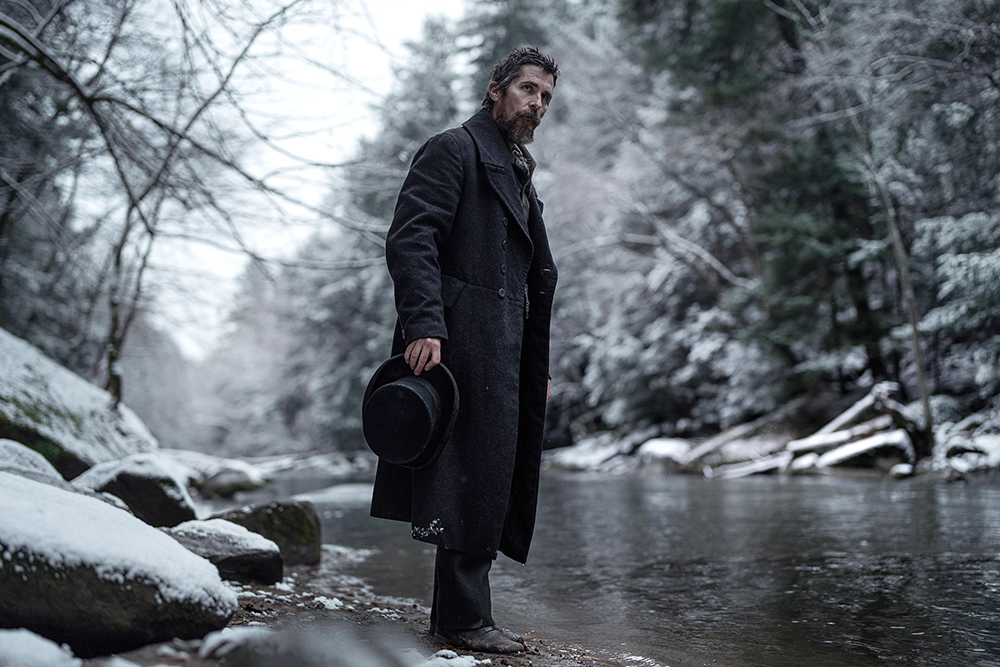The film centers on retired Detective Augustus Landor (Christian Bale). He’s a widower whose daughter ran off recently, and he lives a solitary life in the mountains. He takes back to action when the military asks him to investigate a murder at the United States Military Academy in West Point, New York.
Melling and Bale Transcend Sherlock Holmes Trappings
During Landor’s investigation, he meets young cadet Edgar Allan Poe (Harry Melling), a brilliant and eccentric young writer who has his own theories on who the murderer is. Landor bonds with Poe and asks him to help him on the case, but as the mystery deepens — and the Academy’s commander puts pressure on Landor to quickly wrap up the case — Landor begins to question if Poe isn’t somehow involved in the crime. And what secret is Landor keeping about his missing daughter?
I was expecting “The Pale Blue Eye” to be a Sherlock Holmes-type story, with a brilliant detective and an eccentric sidekick working a horrific murder mystery in a gothic setting. But I was pleasantly surprised by the film, which goes much deeper than a simple procedural. The film opens with a haunting shot of the first murder victim, the camera moving through heavy fog to reveal the silhouette of an Academy cadet hanging from a tree dead, but with his feet touching the ground. It’s a dichotomy that runs throughout all aspects of the film, especially the characters.

Bale’s Augustus Landor is a world-weary and simple man who chafes a bit at the military pomposity of the Academy’s commanders, especially Superintendent Thayer (Timothy Spall), whose face seems frozen in a state of perpetual disdain. His lips always pucker comically as if he’d just bitten into the most tart lemon ever. Landor has equal disdain for Thayer, but hides it well and patiently persists on with his work. This is even after Thayer at one point chides Landor about his past alcoholism and his missing daughter.
A Period Mystery with More to Give
The movie really takes off once Edgar Allan Poe shows up. Harry Melling makes a perfect Poe, with his big gloomy eyes always seeming to be searching for answers to questions no one else can hear. Poe’s manic energy and imagination are the perfect counterpoint to Landor’s quiet down-to-Earth pragmatism. Every scene between the two is enjoyable as they try to outdo each other and interpret the various clues they uncover throughout the film.
The film’s 128 minute run-time provides room for a few fascinating subplots that further set the film apart from a standard mystery film, including Poe’s romance with a doctor’s daughter (Lucy Boynton). She has a mysterious ailment that causes her to have seizures; the film film juxtaposes this over Landor’s grief over his missing daughter and his visions of her. Also, the film touches on Satanism and witchcraft, injecting dark fantasy into the mix.

“The Pale Blue Eye” is a gripping film that will keep you transfixed as it slowly reveals its layers of dark secrets like a Russian Doll. Anchored by fantastic performances by Christian Bale and Harry Melling, grotesque murders and heavy atmosphere, the film is an enjoyable and intense watch for anyone who loves their mysteries wrapped in an icy sheen of horror.
“The Pale Blue Eye” is currently available to stream on Netflix.



